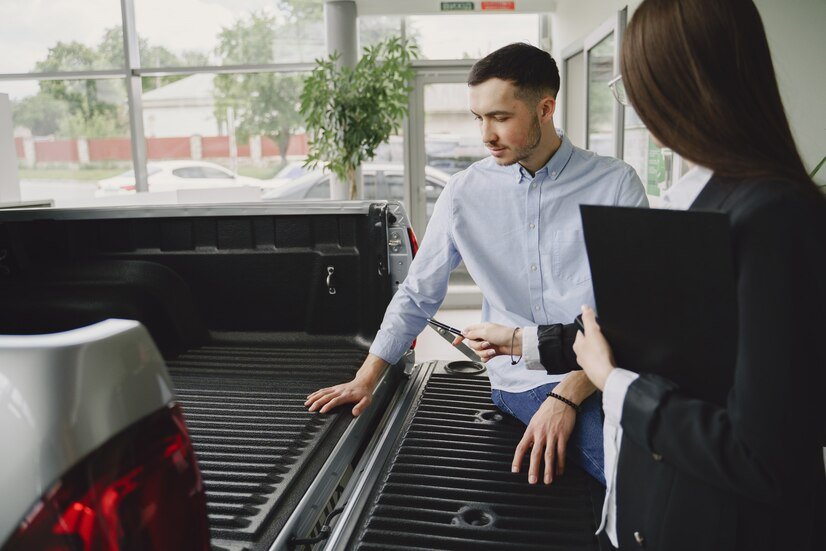Explore the critical challenges facing the automotive industry in 2025, from EV adoption slowdowns to autonomous driving advancements. Discover how major players are adapting to economic pressures, changing consumer preferences, and technological shifts in this comprehensive analysis by TechsTribune.
The automotive industry, long a bellwether of technological innovation and economic health, finds itself at a critical juncture in 2025. After years of ambitious promises and massive investments in electric vehicles (EVs) and autonomous driving technology, the industry is now grappling with the realities of a rapidly changing market landscape. From unexpected slowdowns in EV adoption to the rise of Chinese manufacturers and the persistent challenges of developing truly autonomous vehicles, automakers are facing a perfect storm of challenges that threaten to reshape the industry as we know it.
This article, brought to you by TechsTribune, delves deep into the multifaceted challenges confronting the automotive sector. We’ll explore how major players are adapting to these pressures, the technological and economic factors at play, and what this means for consumers and the future of transportation. Buckle up as we navigate the twists and turns of an industry in flux, reaping what it has sown over the past decade of innovation and ambition.
The EV Slowdown: A Reality Check
The electric vehicle revolution, once hailed as the inevitable future of transportation, has hit some unexpected speed bumps. In 2025, we’re witnessing a significant slowdown in EV adoption rates, forcing automakers to reassess their strategies and timelines.
Key Factors Contributing to the Slowdown:
- Economic Pressures: Global economic uncertainties have made consumers more cautious about investing in new, potentially more expensive technologies.
- Infrastructure Challenges: The promised widespread
- has not materialized as quickly as anticipated, fueling range anxiety among potential buyers.
- Battery Technology Limitations: While improvements have been made, battery technology has not advanced as rapidly as some automakers had hoped, limiting range and increasing costs.
- Competition from Improved ICE and Hybrid Vehicles: Traditional internal combustion engine (ICE) vehicles and hybrids have become more fuel-efficient, offering a compelling alternative to full EVs.
Industry Response:
- Shift to Hybrids: Many automakers are pivoting to focus more on hybrid vehicles as a bridge technology. For instance, Toyota and Honda have seen success with their hybrid models, capitalizing on consumers’ desire for improved fuel efficiency without the perceived risks of full EVs.
- Revised Production Plans: Major players like Ford, Stellantis, and Volkswagen are scaling back their EV production forecasts, reallocating resources to meet current market demands.
- Increased R&D in Battery Technology: There’s a renewed focus on developing more efficient, longer-lasting, and cheaper battery technologies to make EVs more attractive to consumers.
The Rise of Chinese Manufacturers: A New Competitive Landscape
One of the most significant developments in the automotive industry is the rapid rise of Chinese manufacturers, who are challenging established players on both price and innovation.
Impact on Global Markets:
- Price Competitiveness: Chinese brands like BYD and Nio are offering EVs at price points that are difficult for Western manufacturers to match, particularly in emerging markets.
- Technological Innovation: Chinese companies are not just competing on price; they’re also leading in areas like battery technology and in-car software integration.
- Global Expansion: Chinese automakers are aggressively expanding into European and North American markets, forcing established players to defend their home turf.
Western Automakers’ Response:
- Strategic Partnerships: Some Western automakers are forming joint ventures with Chinese companies to gain access to their technology and manufacturing capabilities.
- Focus on Premium Segments: To differentiate themselves, many Western brands are doubling down on luxury and premium offerings where they still hold an edge.
- Lobbying for Policy Support: There’s increased pressure on governments in Europe and North America to support domestic auto industries through policies and incentives.
Autonomous Driving: Promise vs. Reality
The dream of fully autonomous vehicles cruising our streets has been a driving force in the industry for years. However, in 2025, we’re seeing a more sober assessment of the challenges involved.
Current State of Autonomy:
- Level 2 and 3 Autonomy: Most advanced consumer vehicles are operating at Level 2 or 3 autonomy, with features like adaptive cruise control, lane-keeping assistance, and limited self-parking capabilities.
- Regulatory Hurdles: The lack of consistent regulations across different regions continues to be a significant barrier to wider adoption of autonomous features.
- Public Trust: High-profile accidents involving semi-autonomous vehicles have eroded public confidence, slowing adoption rates.
Industry Developments:
- Focused Testing: Companies like Waymo and Cruise are conducting extensive real-world testing in controlled environments, gradually expanding their operational domains.
- Partnerships and Consolidation: We’re seeing increased collaboration between automakers, tech companies, and startups to share the enormous costs and risks associated with developing autonomous technology.
- Shift in Timeline Expectations: Many automakers have pushed back their timelines for introducing fully autonomous vehicles, focusing instead on incremental improvements to driver assistance features.
The Hybrid Resurgence: A Bridge to the Future
As full EV adoption faces challenges, hybrid vehicles are experiencing a renaissance, offering a compromise between traditional ICE vehicles and full EVs.
Factors Driving Hybrid Popularity:
- Improved Fuel Efficiency: Modern hybrids offer significantly better fuel economy than traditional ICE vehicles without the range anxiety associated with full EVs.
- Lower Entry Costs: Hybrid vehicles are generally less expensive than comparable full EVs, making them more accessible to a broader range of consumers.
- Flexibility: Plug-in hybrids (PHEVs) offer the best of both worlds, allowing for short all-electric trips and longer journeys using gasoline power.
Market Response:
- Expanded Model Lineups: Automakers are rapidly expanding their hybrid offerings across various vehicle segments, from compact cars to SUVs and even pickup trucks.
- Marketing Focus: There’s a renewed marketing push highlighting the benefits of hybrid technology as a practical, eco-friendly option for consumers not ready to go fully electric.
- Government Incentives: Some governments are extending or introducing new incentives for hybrid vehicles, recognizing their role in reducing overall emissions.
Supply Chain Resilience: Lessons from Recent Disruptions
The global pandemic and subsequent supply chain disruptions have forced the automotive industry to rethink its approach to manufacturing and sourcing.
Key Challenges:
- Semiconductor Shortages: The ongoing chip shortage has highlighted the industry’s vulnerability to supply chain disruptions.
- Geopolitical Tensions: Trade disputes and geopolitical conflicts have complicated global supply chains, leading to increased costs and uncertainties.
- Raw Material Sourcing: The push towards EVs has intensified competition for critical materials like lithium, cobalt, and rare earth elements.
Industry Adaptations:
- Localization of Supply Chains: Many automakers are working to bring critical component production closer to their assembly plants.
- Diversification of Suppliers: There’s a concerted effort to reduce reliance on single sources for critical components.
- Increased Inventory: Some companies are moving away from just-in-time manufacturing, holding larger inventories of critical components to buffer against disruptions.
The Future of Mobility: Beyond Traditional Ownership Models
As urban populations grow and environmental concerns mount, the industry is exploring new models of car usage and ownership.
Emerging Trends:
- Car Sharing and Subscription Services: Companies are experimenting with flexible ownership models that allow consumers to access vehicles without the long-term commitment of traditional ownership.
- Micromobility Integration: Automakers are exploring partnerships with bike and scooter-sharing services to offer comprehensive mobility solutions.
- Mobility-as-a-Service (MaaS): There’s growing interest in platforms that integrate various transportation options, from public transit to car-sharing, into a seamless user experience.
Industry Response:
- Investment in Startups: Major automakers are investing in or acquiring mobility startups to diversify their offerings and prepare for a future where traditional car ownership may be less prevalent.
- Development of Modular Vehicles: Some companies are exploring modular vehicle designs that can be easily adapted for different use cases, from personal transportation to last-mile delivery.
- Enhanced Connectivity: There’s a focus on developing vehicles that are not just modes of transport but integrated mobility hubs, connected to a wider ecosystem of services.
Conclusion
As we navigate through 2025, the automotive industry finds itself at a crossroads, facing challenges that were barely on the horizon a decade ago. The slowdown in EV adoption, the rise of Chinese competitors, the complexities of autonomous driving, and the resurgence of hybrid technologies are all reshaping the landscape in ways that few could have predicted.
Yet, within these challenges lie opportunities. The industry’s pivot towards more realistic timelines for EV adoption and autonomous driving could lead to more sustainable, consumer-friendly innovations. The competition from Chinese manufacturers is spurring established players to innovate faster and more efficiently. And the renewed focus on hybrid technologies and alternative ownership models could pave the way for a more diverse, flexible automotive ecosystem that better meets the needs of modern consumers.
As the industry reaps what it has sown over years of ambitious promises and massive investments, it’s clear that adaptability, resilience, and a willingness to reassess long-held assumptions will be key to navigating the road ahead. For consumers, this period of flux promises a future with more choices, better technologies, and potentially more sustainable transportation options. The automotive industry of 2025 may be facing significant headwinds, but it’s also poised for a new era of innovation and transformation that could reshape our relationship with cars and mobility for decades to come.
FAQs
Q1: Are electric vehicles still the future of the automotive industry?
A: While EVs face current challenges, they remain a significant part of the industry’s long-term strategy. However, the timeline for mass adoption may be longer than initially predicted, with hybrid vehicles playing a crucial bridging role.
Q2: How are traditional automakers responding to competition from Chinese manufacturers?
A: Western automakers are focusing on premium segments, forming strategic partnerships, and lobbying for supportive policies. They’re also investing heavily in R&D to maintain technological competitiveness.
Q3: When can we expect fully autonomous vehicles to be widely available?
A: The timeline for widespread Level 4 or 5 autonomy has been pushed back. While advanced driver assistance systems continue to improve, fully autonomous vehicles for general consumer use are likely still several years away.
Q4: Are hybrid vehicles a long-term solution or just a temporary trend?
A: Hybrids are increasingly seen as a crucial transition technology, offering improved efficiency without the range limitations of full EVs. They’re likely to play a significant role in the market for the foreseeable future.
Q5: How is the automotive industry addressing supply chain vulnerabilities?
A: Automakers are localizing supply chains, diversifying suppliers, and in some cases, increasing inventory of critical components. There’s also a push for greater vertical integration in key technologies like battery production.












